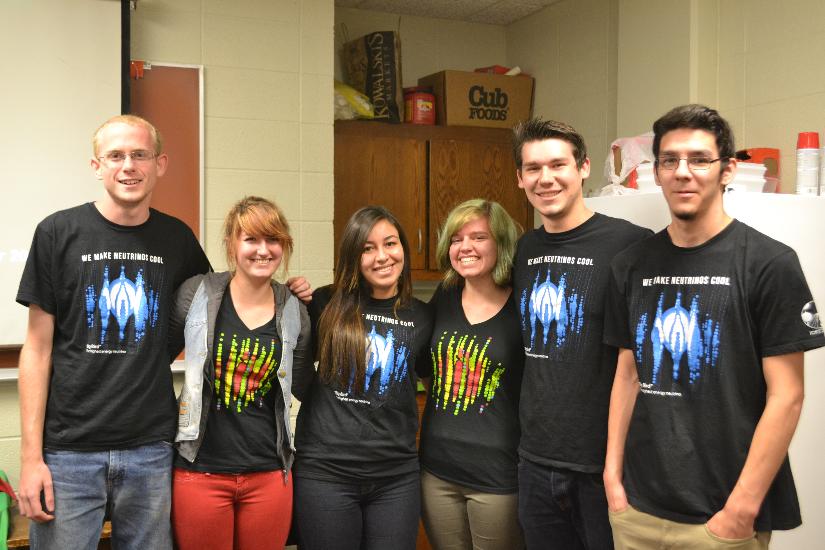UNIVERSITY OF WISCONSIN River Falls
Newsroom
UW-River Falls Solar Study Leads to Antarctic Adventure
October 31, 2014— Life on Earth relies on the energy that we get from the sun. But the sun can also be destructive for our technology-based society. A team from the University of Wisconsin-River Falls, UW-Waukesha, and the University of Delaware is going to McMurdo Station on the coast of Antarctica to work on detectors used to study solar storms. These occasional eruptions from the sun send bursts of energetic particles to the earth that can disrupt communication, and in extreme cases, damage electronics. These fortunately rare, but interesting, outbursts are being studied by the team with support from a five-year National Science Foundation grant.
The Wisconsin team includes Sam Gardner, a third year student at UW-Waukesha, and UW-River Falls Physics Department Professor and Chair Jim Madsen. Madsen and Gardner will be working with University of Delaware Professor Paul Evenson, who grew up in Mercer. They will spend Nov. 12-Dec. 6 preparing to move one of two neutron monitors, the detectors that measure the energetic particles produced in solar storms. Both neutron monitors will eventually be moved from McMurdo station to a new Korean base being built in Antarctica. The goal of the five-year project is to better understand the mechanisms that produce the solar storms, and to study whether the neutron monitors can be used as an early indicator of impending storms.
Gardner is working toward a degree in chemical engineering and plans to transfer to UW-Madison in the fall of 2015. He spent the summer at UWRF updating the computer program that runs the neutron monitors. A talk last year at UW-Waukesha by Madsen sparked Gardner's interest in physics.
"Working on this project over the summer has been an awesome experience," Gardner said. "Being in Antarctica soon seems unreal to me, and the fact that I am able to contribute to the continued success of this project is an amazing opportunity."
Madsen has been involved in astrophysics research in Antarctica for more than 15 years. During this time, more than 60 students have done astrophysics research at UWRF, but only a select few, four students in total with one going twice, have made it to Antarctica. NSF funding will send four students to McMurdo and four more students to the South Pole over the next five years.
"Sam was selected for this deployment based on his enthusiasm for the project and his computer expertise," Madsen said.
The South Pole neutron monitor project is headed by UWRF assistant professor Surujhdeo Seunarine, who mentored Gardner and five other students in astrophysics this summer.
The NSF funding for the neutron monitor projects specifically targets students from two-year colleges with the aim of providing greater access to frontline research. Follow Gardner's adventure at https://i3uwrf.wordpress.com. Madsen and Seunarine are also members of the international IceCube Collaboration that built and operates a neutrino observatory at the South Pole. More research opportunities for students at UWRF and those currently attending two-year colleges will be available in the summer of 2015, including summer internships at European IceCube institutions.
For more information, contact Madsen at 715-425-3235 or email james.madsen@uwrf.edu.

Photo: Sam Gardner, second from right, with 2014 UWRF summer research students (left to right) Nicholas Jensen, Laura Lasardi, Thamyres Lana Gehlen, Kelsey Kolell, and Kyle Lueckfeld.











